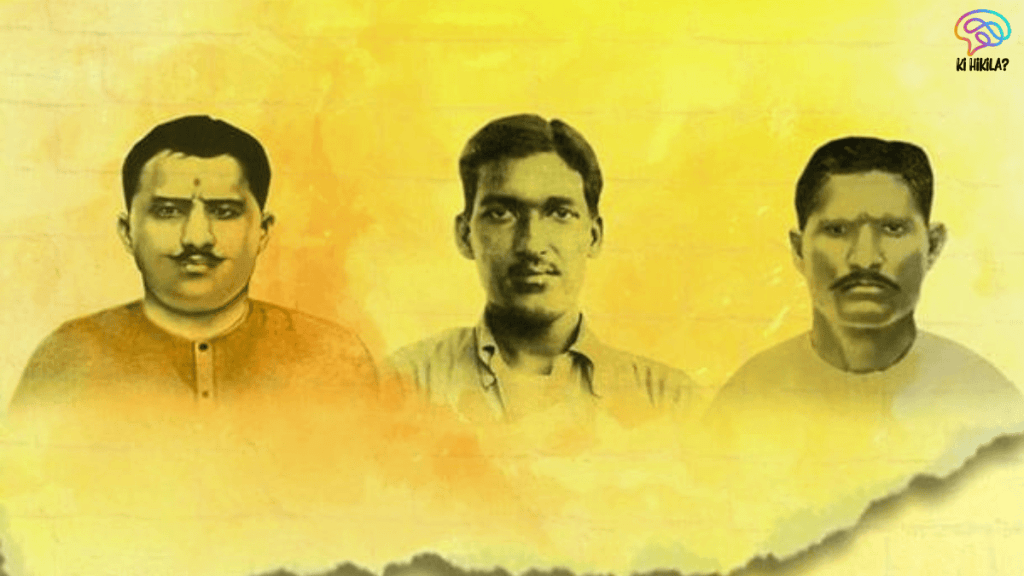Kakori Conspiracy marked one of the boldest and most influential events in India’s freedom movement. On 9 August 1925, members of the Hindustan Republican Association (HRA) carried out a planned train robbery near the town of Kakori in present-day Uttar Pradesh. Unlike an ordinary robbery, this act was intended to secure funds for revolutionary activities against the British colonial regime and protest the unjust taxation imposed on Indians. The incident not only highlighted the courage of young revolutionaries but also ignited nationalist sentiments across the country.
Objectives of the Kakori Conspiracy
The Hindustan Republican Association, which was later renamed the Hindustan Socialist Republican Association (HSRA), was founded with the goal of achieving complete independence through armed struggle. Leaders like Ram Prasad Bismil, Chandrashekhar Azad, and Ashfaqulla Khan believed that peaceful petitions and constitutional methods were insufficient to shake the foundations of colonial rule.
The Kakori Conspiracy was not a mere act of looting but a well-thought-out plan to:
- Seize government treasury money transported via train.
- Finance revolutionary operations, including the purchase of arms and spreading nationalist propaganda.
- Demonstrate opposition to Britain’s exploitation of India’s economy.
- Send a clear message that revolutionaries were willing to risk their lives for freedom without harming innocent civilians.
The Kakori Train Robbery of 1925
On 9 August 1925, a group of revolutionaries led by Ram Prasad Bismil, Ashfaqulla Khan, Chandrashekhar Azad, Rajendra Lahiri, and others stopped the Number 8 Down train traveling from Shahjahanpur to Lucknow. Their main target was the guard’s cabin carrying money bags filled with government funds.

The operation was executed swiftly, and the revolutionaries managed to secure about Rs. 8,000—a significant amount at the time. Unfortunately, a passenger named Ahmed Ali lost his life during a crossfire, turning the event into a case of manslaughter.
This daring incident, popularly remembered as the Kakori Conspiracy, shook the British government. It was a clear demonstration of defiance and a direct challenge to colonial authority.
Arrests and Trial of Revolutionaries
The British administration immediately launched a widespread crackdown after the robbery. A nationwide manhunt began, resulting in the arrest of several HRA members. Prominent leaders like Ram Prasad Bismil and Ashfaqulla Khan were captured, while Chandrashekhar Azad managed to evade arrest for some time.
The trial, which started on 21 May 1926, involved 28 accused members. The case drew huge public attention and turned into a battle between colonial power and Indian nationalism. While the revolutionaries defended their cause passionately, the prosecution, led by Pandit Jagat Narayan Mulla, pushed for the harshest punishment.
Verdict and Sentences
In July 1927, the British court delivered its verdict in what became known as the Kakori Conspiracy Case. The sentences were as follows:
- Death Penalty: Ram Prasad Bismil, Ashfaqulla Khan, Thakur Roshan Singh, and Rajendra Lahiri.
- Life Imprisonment or Long Sentences: Many others were sentenced to long terms of imprisonment or deported to the infamous Cellular Jail in the Andaman Islands.
Despite widespread protests and appeals for clemency, the British government refused to show leniency. In December 1927, the four revolutionaries were executed, turning them into martyrs of the Indian independence struggle.
Legacy and Impact of the Kakori Conspiracy
The Kakori Conspiracy left a deep mark on India’s freedom struggle:
- Symbol of Sacrifice – The bravery of the revolutionaries inspired countless youths to join the movement for independence. Their willingness to die for the nation became a rallying cry against colonial oppression.
- Rise of Militant Nationalism – The event highlighted the growing frustration with non-violent methods and showcased the shift toward militant resistance in the 1920s.
- Economic Exploitation Exposed – By targeting government funds, the revolutionaries drew attention to how the British drained India’s wealth while imposing heavy taxes on ordinary citizens.
- Chandrashekhar Azad’s Leadership – Though many leaders were captured or executed, Azad continued revolutionary activities until his heroic death in 1931.
- Inspiration for Future Generations – The Kakori martyrs became household names, remembered in textbooks, patriotic songs, and political speeches. Their legacy continues to inspire discussions about sacrifice and courage in modern India.
Conclusion
The Kakori Conspiracy was more than just a train robbery; it was a defining moment in India’s freedom movement. The courage of Ram Prasad Bismil, Ashfaqulla Khan, and their comrades challenged the might of the British Empire and awakened a spirit of resistance among millions of Indians. Though the revolutionaries paid with their lives, their sacrifice strengthened the momentum of the independence struggle, reminding future generations that freedom is won through courage, sacrifice, and unwavering determination.